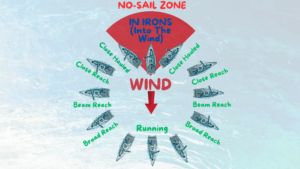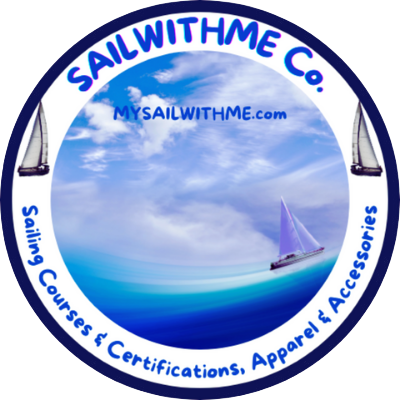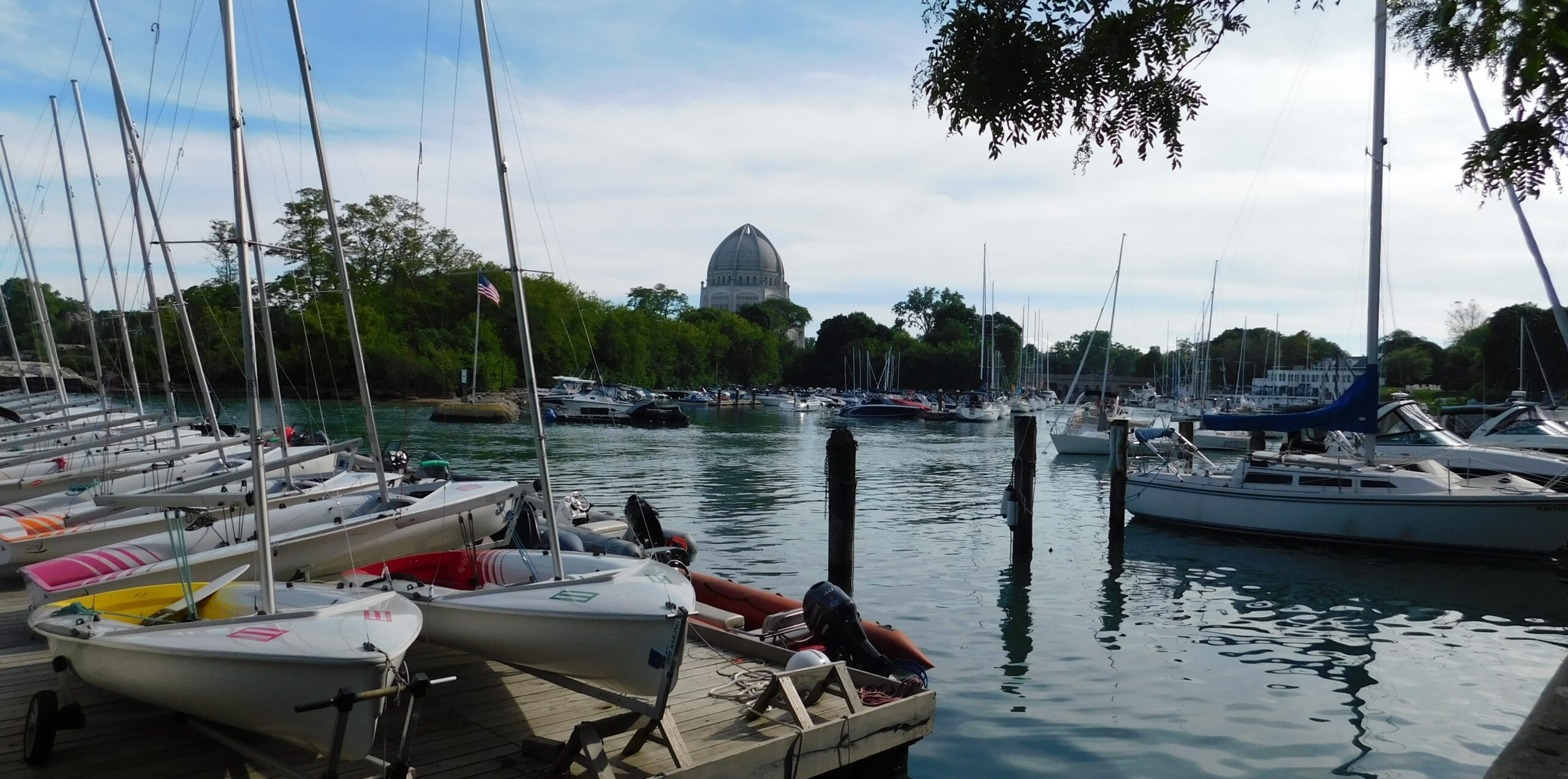
Sailing, an age-old practice, combines the art of harnessing wind power with the science of navigation. Whether you’re drawn to the serene waters of a lake or the vast expanses of the ocean, sailing offers an exhilarating blend of adventure, skill, and tranquility. For beginners, the world of sailing might appear challenging, but with proper guidance and preparation, anyone can start this maritime journey. This guide aims to introduce you to the fundamental aspects of sailing, from understanding basic terminology to setting sail on your first voyage. Understanding the basic concepts of sailing is crucial, not just for enjoyment but also for your safety and the safety of those around you.
Choosing the right type of sailboat is a pivotal decision for anyone looking to dive into the world of sailing, whether it’s a small dinghy for solo adventures or a larger keelboat for cruising with friends and family. The right choice depends on various factors. These include your sailing experience, intended use, budget, and personal preferences.
The importance of understanding navigation, weather patterns, wind direction and speed is important. Use telltales (small pieces of yarn attached to the sails) to gauge wind flow and adjust sails accordingly. This isn’t just about plotting a course; it’s also about making informed decisions to keep your sailing trip enjoyable and safe.
Hoist the Sails: Preparing for Your First Voyage

Learning your knots is important because they keep your sails, anchor, and safety gear in place. Launching and docking can feel tricky at first, but with practice, you’ll get the hang of it quickly. Remember, even the best sailors had to start from scratch.
Safety should always be your first priority. A well-prepared sailor is confident and much safer on the water. Knowing safety protocols and having equipment like life jackets, flares, and navigation lights, ensures that you’re prepared for any situation. A proper safety check includes inspecting your life jackets, communication devices, and navigation lights, among others. Always wear a life jacket and ensure the boat is equipped with essential safety gear, including flares, a first-aid kit, and a whistle. Perform a thorough inspection of the boat to ensure everything is in working order. Before setting out, check the weather forecast to avoid harsh conditions.
Sailing, like life, requires a bit of mental preparation. Set realistic goals for what you want to achieve during your sail and be prepared to adjust your plans as you learn.
First, rigging your sailboat is like setting the stage for a performance. Every line, every sail has to be meticulously arranged. Secure all lines and halyards (ropes used for hoisting sails). Start with the mainsail by raising it using the halyard. Adjust the sail’s angle relative to the wind direction to catch the wind properly.
Basic Maneuvers:
Tacking and jibing might sound like dance moves, but in sailing, they’re your key maneuvers for changing direction.
Tacking: To tack, turn the boat’s bow through the wind. This maneuver is for changing direction while sailing upwind.
Gybing: To gybe, turn the stern through the wind. This maneuver is useful when sailing downwind but requires careful handling to prevent accidents due to the rapid movement of the boom.
Catching the Wind: Mastering the Techniques of Sailing
Learning how to trim your sails efficiently can make a world of difference in your sailing performance. Think of it as fine-tuning an instrument – it’s about making small adjustments for a big impact. Trimming sails refers to the process of adjusting the position and shape of a sail to optimize its performance and maximize the efficiency of the boat’s movement through the water. The goal of sail trimming is to balance the forces on the sail and the boat, ensuring that the sails catch the wind effectively and propel the boat in the desired direction.
Now what about understanding points of sail? This is about how your boat interacts with the wind at different angles. There are several points of sail, and grasping these concepts is important for making headway and maneuvering through the water. Understanding the points of sail is fundamental to mastering sailing. This concept refers to the various angles at which a sailboat can sail relative to the wind direction. Knowing the points of sail helps you optimize sail trim, steer effectively, and navigate efficiently. The points of sail are typically represented in a circular diagram with the wind direction coming from the top (12 o’clock position).

Conditions can change quickly out on the water, and being able to adjust your sail plan on the fly is a key part of sailing smart. More about Points of Sail here.
Sailing with Mother Nature: Embracing Eco-Friendly Practices
It’s about preserving the very waters we so love to navigate. The open seas and tranquil lakes are ours to enjoy, but equally, they’re ours to protect. That’s going to include making smart, green choices when you’re outfitting your sailboat. Choose sailing gear made from sustainable materials and opt for eco-friendly maintenance products that won’t harm marine life. After all, what’s the point of sailing through nature if we’re not going to make sure it stays pristine? Choosing sailing gear made from sustainable materials not only supports environmental conservation but also promotes the use of innovative technologies and practices that reduce our ecological footprint.
Sustainable sailing gear is increasingly available as manufacturers prioritize environmental responsibility alongside performance and durability. From wetsuits and jackets to shoes and accessories, gear made from recycled, bio-based, and eco-friendly materials helps reduce the ecological impact of sailing while maintaining high standards of functionality and comfort. Choosing sustainable gear supports companies that are committed to environmental conservation and innovation, contributing to the health of our oceans and planet. By opting for products made from renewable and recycled materials, sailors can enjoy their passion while also taking care of the environment. Everything you bring on your boat should, as much as possible, come back to shore with you. It’s a simple mantra: ‘Leave nothing behind but your wake‘. Minimize single-use plastics and be meticulous about waste sorting.
Energy and water usage while sailing should always be kept in check. Install solar panels to power your boat’s electronics or opt for a wind generator. Collect rainwater for washing and use it sparingly. Practicing sustainable sailing doesn’t just stop at your boat’s operations. It extends into the broader scope of marine conservation. Participate in beach clean-ups, advocate for the protection of marine habitats, and stay informed about ecological regulations. Your actions will inspire others and contribute to a ripple effect of environmental stewardship in the sailing community.
Charting Your Course: Next Steps for Aspiring Sailors

If you’ve made it this far, congratulations! You’re no longer just dipping your toes in the water; you’re well on your way to becoming a sailor. But remember, sailing, much like any skill worth having, is a journey, and there’s always more to learn. First things first: assess your progress. It can be incredibly rewarding to reflect on how far you’ve come. Take note of what you’ve mastered and, equally important, what challenges you’ve faced. Identifying areas where you need more practice will help you set focused, achievable goals for your next outings.
Don’t sail solo in your learning — join a sailing community. This can be one of the most enriching experiences for a beginner. Local clubs often offer clinics, races, and social events where you can meet fellow enthusiasts and seasoned sailors who can share their insights and experiences.
You might want to consider formal certifications and advanced training courses. These can provide comprehensive education in navigation, boat handling, and safety, making you a more competent and confident sailor. Plus, certifications open doors if you decide to charter a boat or even turn this passion into a profession. The best way to learn sailing is through hands-on experience. Enrolling in a sailing course or hiring a professional instructor can provide valuable practical knowledge.
Sailing is as much about the community as it is about the activity itself. Joining a sailing club or participating in regattas (sailing races) can enhance your experience and provide opportunities to learn from seasoned sailors. Sailing Clubs offer resources, training, and social events. They’re a great way to meet like-minded individuals and gain access to boats.
Now, plan your sailing adventures. Choose destinations that you like and challenge your newfound skills. Whether it’s tranquil local waters or more demanding open seas, each venture will contribute to your growth as a sailor.
Stay curious and keep learning. The world of sailing is vast and ever-changing. Keeping up with best practices, new technologies, and innovative eco-friendly strategies will enrich your sailing adventures and ensure you are sailing responsibly and sustainably.
I really hope that you’ve found this guide helpful and that it’s sparked a lasting excitement for sailing in you. Remember that every sailor’s journey is unique. Adjust your course as you go, and never lose sight of the horizon. Happy sailing!

